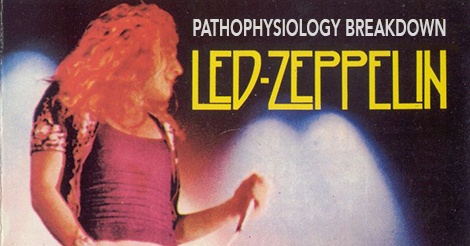Pathophysiology Breakdown: Understanding the Left Ventricular Pressure-Volume Curve
- by
- Sep 22, 2015
- Reviewed by: Amy Rontal, MD

 The below image is a commonly tested concept both in physiology courses and on the USMLE Step 1.
The below image is a commonly tested concept both in physiology courses and on the USMLE Step 1.
It may look like a simple diagram, but there is a lot of information that can be tested here. As such, students need a strong understanding of how to work through the baseline LV pressure-volume curve and how changes in preload, afterload, etc. can lead to changes in the curve.

First, let’s walk through this diagram (image courtesy of 95ofwhatyouteach.blogspot.com).
Starting at point 1, this represents the beginning of diastolic filling of the left ventricle and flow through the mitral valve. Point 3 represents closing of the mitral valve and the end of diastole, with the segment labeled 4 representing the beginning of systole and isovolumetric contraction where the ventricle is generating enough pressure to overcome the afterload and open the aortic valve (point 5). The segment labeled as 6 represents ejection which occurs until point 7, where the aortic valve closes and systole ends. Finally, the segment labeled as 8 represents the beginning of diastole and isovolumetric relaxation.
Now let’s evaluate some key concepts that may be tested through this diagram:
Preload
The preload, or end diastolic volume, is the amount of blood in the left ventricle at the end of diastole and is represented here by point 3. An increase in preload will shift point 3 further to the right, whereas a decrease in preload will shift point 3 to the left.
Afterload
Think of the afterload as the force your heart has to work against in order to open the aortic valve (point 5). Changes in afterload are represented by the segment labeled as 4 a taller segment represents the increased pressure during isovolumetric contraction that is necessary to overcome the increased afterload, while a shorter segment would represent a decrease in afterload.
Contractility
The heart’s contractility is represented by the segment labeled as 6, with point 7 corresponding to both closure of the aortic valve and the end systolic volume. Changes in contractility would be represented by manipulating point 7 if moved further to the right, this would be a higher end systolic volume and thus decreased contractility.
Of note, the ejection fraction can be calculated as EDV ESV/EDV. On this diagram, that would be point 3 point 7/point 3.
Heart Sounds
You may also be asked to pick the point at which various heart sounds or murmurs would be best heard on this diagram. These are as follows:
- S1 closure of the mitral valve (3)
- S2 closure of the aortic valve (7)
- S3 heard in early diastole after S2, so it would be closest to 7
- S4 heard late in diastole near S1, so it would be closest to 3
- Aortic stenosis Harsh systolic crescendo-decrescendo that is heard as blood travels through the aortic valve; thus, it would peak in intensity midway through segment 6.
- Aortic regurgitation diastolic murmur; heard best around segment 8.
- Mitral Stenosis systolic murmur characterized by an opening snap as blood flows through the mitral valve; thus it would be heard early during diastolic filling (after point 1)
Now, let’s walk through how some practical examples would change the curve from baseline.
- Infusion of 2L of Normal Saline this would increase preload, thus shifting point 3 to the right
- Digoxin digoxin is a positive inotrope which would result in increased contractility and a shift of point 7 further left (representing a decrease in the end systolic volume).
- Hypertensive emergency this would represent an increase in afterload, with a shift of point 5 further up (representing an increased LV pressure required to open the aortic valve). Of note, increases in afterload are often accompanied by a decrease in the ejection fraction (point 7 shifted further right) as the heart spends more time during systole in isovolumetric contraction.
- Sublingual nitroglycerin as a venodilator, nitroglycerin is going to decrease the afterload (shift point 5 down). Additionally, as it increases venous pooling, it will also result in a decreased preload (point 3 shifted left).
- Arteriovenous fistula by bypassing the capillary beds, AV fistulas will result in a decrease in afterload (point 5 shifted down). Additionally, bypassing the capillary beds results in less peripheral runoff and greater blood return to the heart leading to an increased preload (point 3 shifted right).
We hope you enjoyed this pathophysiology breakdown. If you have any questions, please let us know. Rock on!









